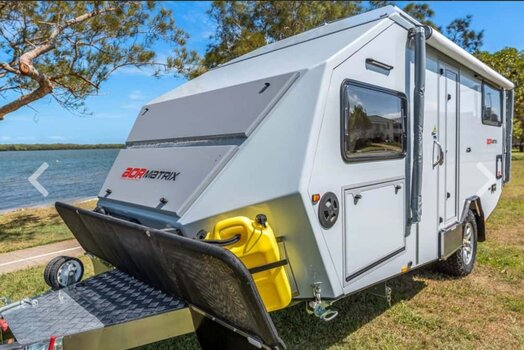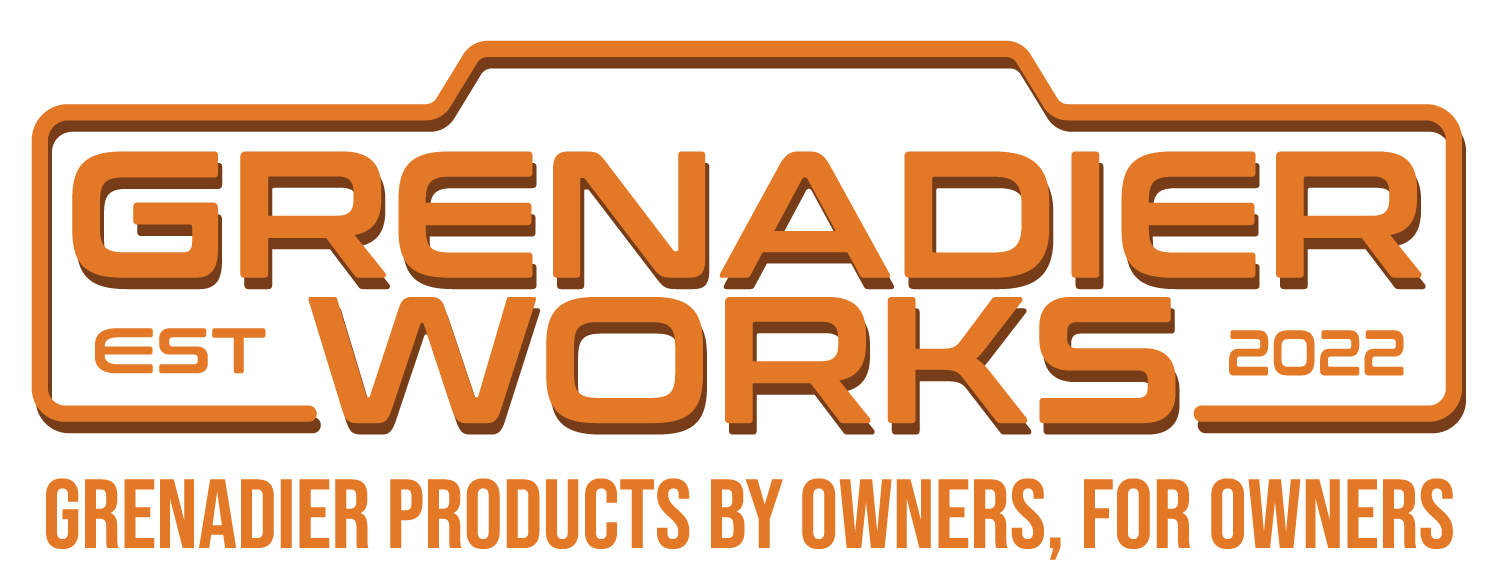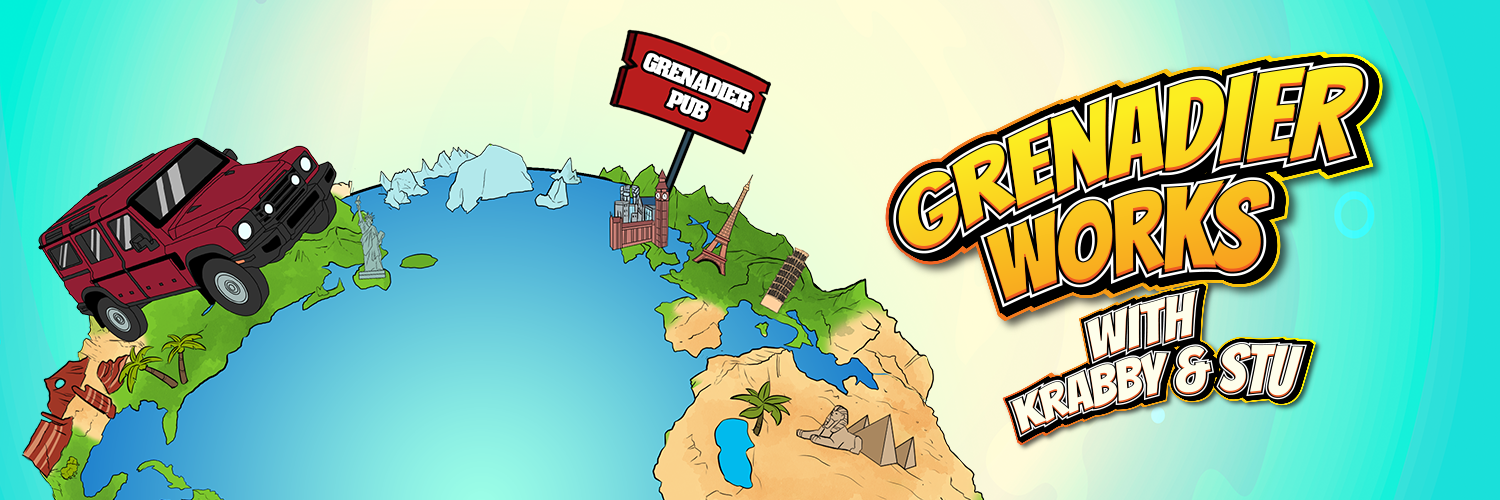Is this the new ARB brushless version of the dual air compressor?
The Grenadier Forum
Register a free account today to become a member! Once signed in, you'll be able to contribute to the community by adding your own topics, posts, and connect with other members through your own private inbox! INEOS Agents, Dealers or Commercial vendors please contact admin@theineosforum.com for a commercial account.
You are using an out of date browser. It may not display this or other websites correctly.
You should upgrade or use an alternative browser.
You should upgrade or use an alternative browser.
Vehicle mounted twin air compressor
- Thread starter globalgregors
- Start date
The ine pictured is not the new brushless compressorIs this the new ARB brushless version of the dual air compressor?
What is the advantage of the brushless version? I’ve never seen that mention in the literature.The ine pictured is not the new brushless compressor
ARB 4x4 AccessoriesWhat is the advantage of the brushless version? I’ve never seen that mention in the literature.
Search
Search
Submit Search
AccountCart
Shop Your Vehicle
My Garage
Year *
Make *
Model *
Submit
Reset
Introducing Best-In-Class ARB Brushless Air Compressors
ARBBrushlessCompressor1024_489-Edit (1)
ARB Brushless Air Compressors enable you to spend less time inflating and more time adventuring, Faster Air for Out There.
THE ARB BRUSHLESS ADVANTAGE
ARB is well known for a host of iconic products including air compressors(Opens in a new window). Whether powering an Air Locker differential(Opens in a new window) or inflating tires, ARB Air Compressors are the gold standard for mounted or portable air power. ARB is leveling up the air compressor game with the new Brushless Air Compressor lineup, which offers a 50% increase in output over the existing line of market-leading air compressors. Plus, the Brushless units have active cooling, smart features, quick-release mounts, and an efficient design with class-leading airflow-to-weight ratio.
Per arb
Less maintenance/issues as like all electric motors of that type, thnk starter motor, the brushes are the main weak point/maintenance issue.What is the advantage of the brushless version? I’ve never seen that mention in the literature.
Is that getting too enough air to run tools without a tank?
Or maybe get the single version brushless with a tank? The new singles should give similar performance to the old double? Correct?
Is the dual version really redundant? As in if one of them is not working, does the other one still provide pressurized air?
Or maybe get the single version brushless with a tank? The new singles should give similar performance to the old double? Correct?
Is the dual version really redundant? As in if one of them is not working, does the other one still provide pressurized air?
Depends on the tools you want to run. What do you do to require air tools?Is that getting too enough air to run tools without a tank?
Or maybe get the single version brushless with a tank? The new singles should give similar performance to the old double? Correct?
Is the dual version really redundant? As in if one of them is not working, does the other one still provide pressurized air?

1.174 Aufrufe · 1.967 Reaktionen | Australia’s first federally approved GVM upgrade for Ineos Grenadier is here, with options for or without an onboard air system! Enhance your vehicle’s capabilities with More4x4! Contact us for more info or support
Australia’s first federally approved GVM upgrade for Ineos Grenadier is here, with options for or without an onboard air system! Enhance your vehicle’s capabilities with More4x4! Contact us for more...
 www.facebook.com
www.facebook.com
Be good if they did the GVM certification for those that already had the uprated springs.View attachment 7880565

1.174 Aufrufe · 1.967 Reaktionen | Australia’s first federally approved GVM upgrade for Ineos Grenadier is here, with options for or without an onboard air system! Enhance your vehicle’s capabilities with More4x4! Contact us for more info or support
Australia’s first federally approved GVM upgrade for Ineos Grenadier is here, with options for or without an onboard air system! Enhance your vehicle’s capabilities with More4x4! Contact us for more...www.facebook.com
We have about 12 vehicles in WA that have them fitted but no certification.
Certification after registration is a lot more of a problemBe good if they did the GVM certification for those that already had the uprated springs.
We have about 12 vehicles in WA that have them fitted but no certification.
Not to mention lots of off the shelf GVM upgrades don't actually do much.
Ive seen Roberts vid, but not JC's. I just want some extra load carrying capacity, not towing as IMO the Grenadier isn’t the ideal 3k+ kg solution.Certification after registration is a lot more of a problem
Not to mention lots of off the shelf GVM upgrades don't actually do much.
View: https://www.youtube.com/watch?v=aSYWq3Iou-A
View: https://www.youtube.com/watch?v=HmK6sOrJ5aY&t=492s
It's a wonder Cadogan hasn't done an Ineos video yet. He is happy to bag the shit out of every other manufacture except Mitsubishi and Hyundai. He comes across as a condersending prick in most of his videos making them painfull to fully watch. Pretty sure he has done a few videos with ASPW.Certification after registration is a lot more of a problem
Not to mention lots of off the shelf GVM upgrades don't actually do much.
View: https://www.youtube.com/watch?v=aSYWq3Iou-A
View: https://www.youtube.com/watch?v=HmK6sOrJ5aY&t=492s
I see no issue with certification after registerstration as in the truck industry it happens every day for many reasons.
Last edited:
The tank accumulates additional pressure that when initially released boosts the torque produced by the air tool, handy if you’re using an impact wrench or even just an air gun.Is that getting too enough air to run tools without a tank?
Or maybe get the single version brushless with a tank? The new singles should give similar performance to the old double? Correct?
Is the dual version really redundant? As in if one of them is not working, does the other one still provide pressurized air?
Major benefit of twin versus single is duty cycle: the brushless will take longer to accumulate heat but when it does it will toggle off. Twin will run sequentially to ensure supply is maintained. If one compressor fails the twin does offer redundancy, presuming one has wired it according to instructions with dual fuses etc.
The old twin is just paired singles, so it doesn’t produce any greater pressure, the only difference is duty cycle as described above.
Summary though is one only needs the twin for the following reasons:
- Redundancy (eg operating in remote areas)
- Convoy use (eg airing several vehicles at a time)
- 35” or larger tyres
- Tool use, specifically impact wrench, nibbler etc (eg vehicle is a hub for mechanical work in the field)
Last edited:
I was talking to a long term friend yesterday who has been doing laps towing a caravan for many years, both before and after retiring.Ive seen Roberts vid, but not JC's. I just want some extra load carrying capacity, not towing as IMO the Grenadier isn’t the ideal 3k+ kg solution.
He just ordered a new semi-offroad caravan that is only 19 foot.
He has varied caravan sizes and weights and decided most people get too large a van and carry too much crap in it.
Particularly clothes and cooking equipment.
I agree re tank, i have one in my camper for the suspension, 9lts. Its all but useless for using tools, compressor is a 150lpmThe tank accumulates additional pressure that when initially released boosts the torque produced by the air tool, handy if you’re using a impact wrench or even just an air gun.
Major benefit of twin versus single is duty cycle: the brushless will take longer to accumulate heat but when it does it will toggle off. Twin will run sequentially to ensure supply is maintained. If one compressor fails the twin does offer redundancy, presuming one has wired it according to instructions with dual fuses etc.
The old twin is just paired singles, so it doesn’t produce any greater pressure, the only difference is duty cycle as described above.
Summary though is one only needs the twin for the following reasons:
Then for the tank:
- Redundancy (eg operating in remote areas)
- Convoy use (eg airing several vehicles at a time)
- 35” or larger tyres
Not clear that there’s a use case for mating a tank with a single.
- Tool use, specifically impact wrench, nibbler etc (eg vehicle is a hub for mechanical work in the field)
Last edited:
Yes, my preferred option is an AOR Matrix which is well within reasonable weight limitsI was talking to a long term friend yesterday who has been doing laps towing a caravan for many years, both before and after retiring.
He just ordered a new semi-offroad caravan that is only 19 foot.
He has varied caravan sizes and weights and decided most people get too large a van and carry too much crap in it.
Particularly clothes and cooking equipment.
Attachments
A bit of a typo 150 litres per limit, if it is a 150 cfm show me where to buy it, I am in.I agree re tank, i have one in my camper for the suspension, 9lts. Its all but useless for using tools, compressor is a 150cfm.
Corrected thanks @Steve.BA bit of a typo 150 litres per limit, if it is a 150 cfm show me where to buy it, I am in.
9 L isn’t huge, but is it not big enough to run a tool off of? I’m more just looking to future proof an install. I sure hope I don’t need a nibbler, but I assume an impact wrench would be pretty useful when changing tires?I agree re tank, i have one in my camper for the suspension, 9lts. Its all but useless for using tools, compressor is a 150lpm
To run an impact wrench, how big of a tank would you need? And I asked earlier, but I don’t think anyone responded, what about if you had the tank just in line with the hose so that it’s not always with you? I know you could put a tank underneath the vehicle, but that’s more hoses and fittings and stuff that could potentially get damaged.
I assume I would put the brushless twin, if no other reason then by once cry once.
The size of the tank depends on the output of the tools, but to effectively run workshop air tools the tank size wouldn't fit underneath and would take up too much space inside. I'd personally use 18v tools if that works for your usage. Google says 48lt (12 gallin) tank to run workshop tooling.9 L isn’t huge, but is it not big enough to run a tool off of? I’m more just looking to future proof an install. I sure hope I don’t need a nibbler, but I assume an impact wrench would be pretty useful when changing tires?
To run an impact wrench, how big of a tank would you need? And I asked earlier, but I don’t think anyone responded, what about if you had the tank just in line with the hose so that it’s not always with you? I know you could put a tank underneath the vehicle, but that’s more hoses and fittings and stuff that could potentially get damaged.
I assume I would put the brushless twin, if no other reason then by once cry once.
Similar threads
- Replies
- 25
- Views
- 2K
- Replies
- 2
- Views
- 492
- Replies
- 3
- Views
- 443
- Replies
- 6
- Views
- 1K




